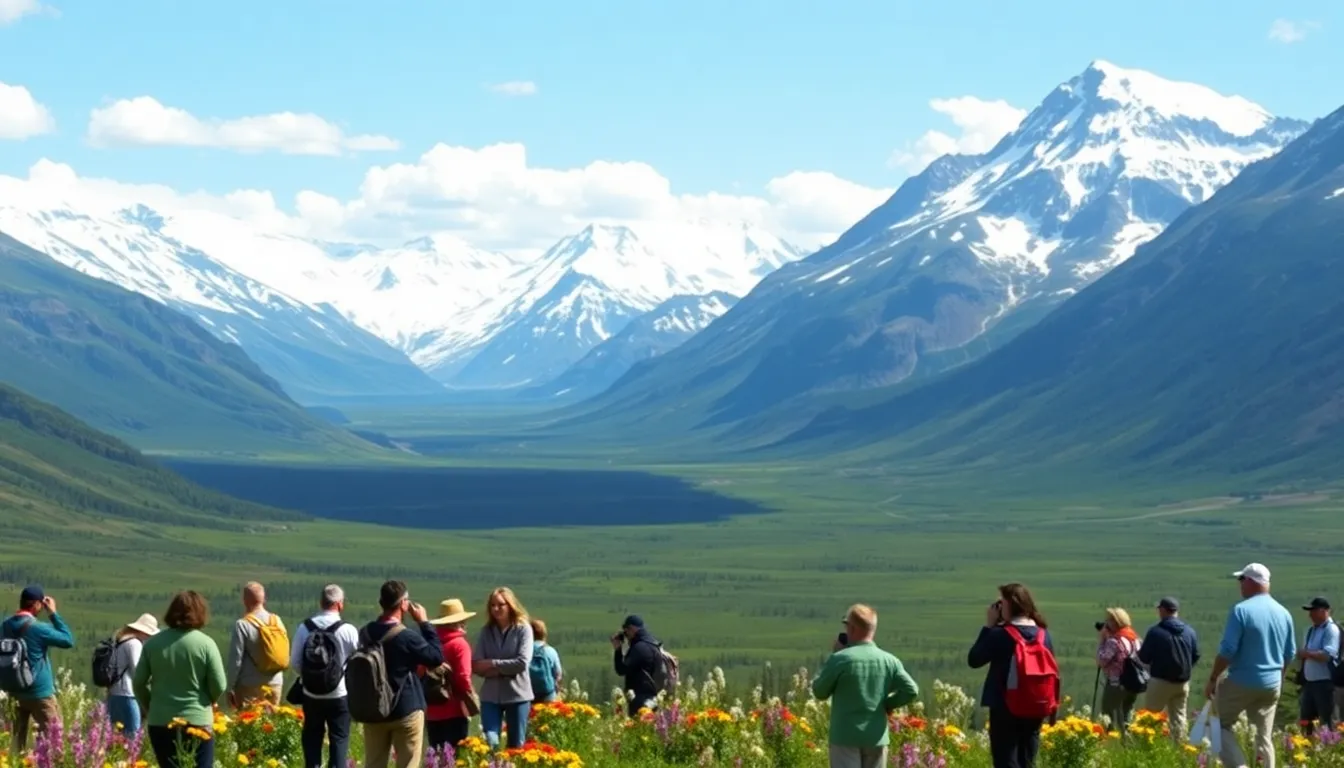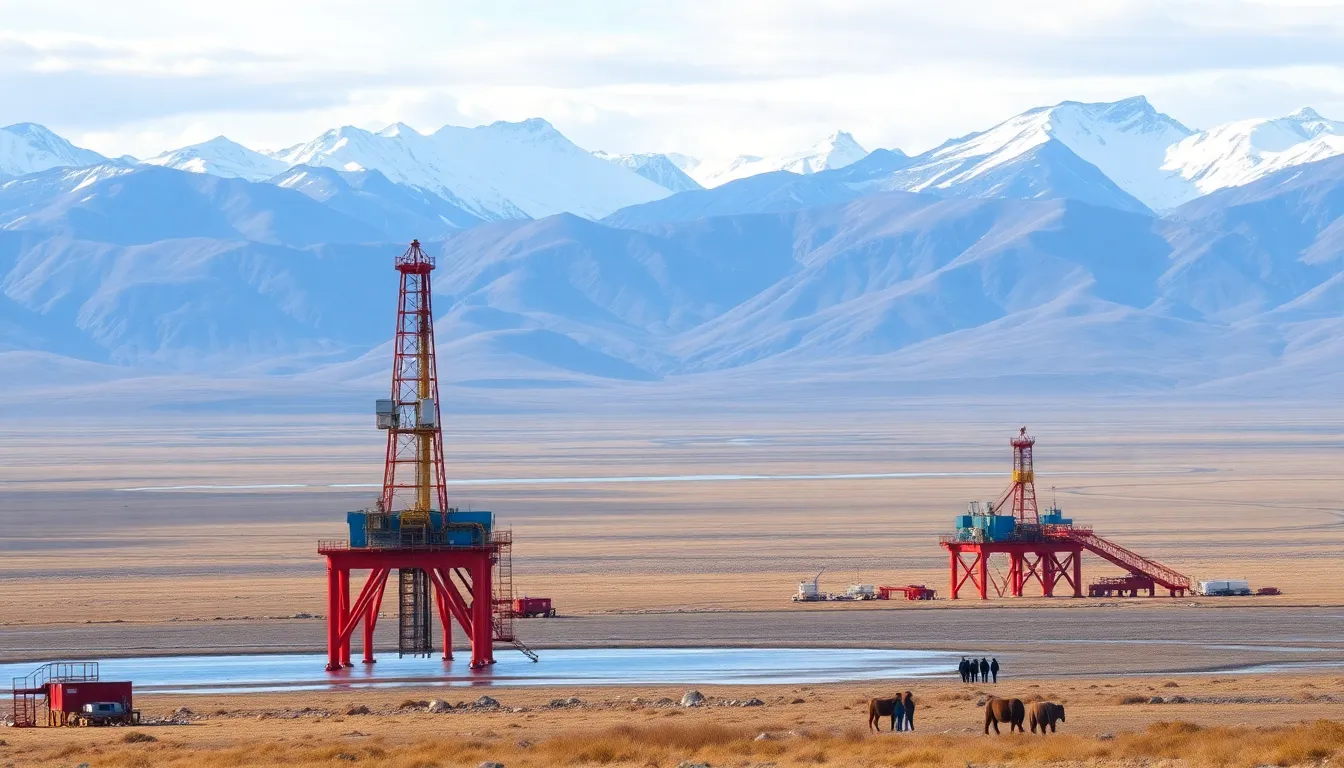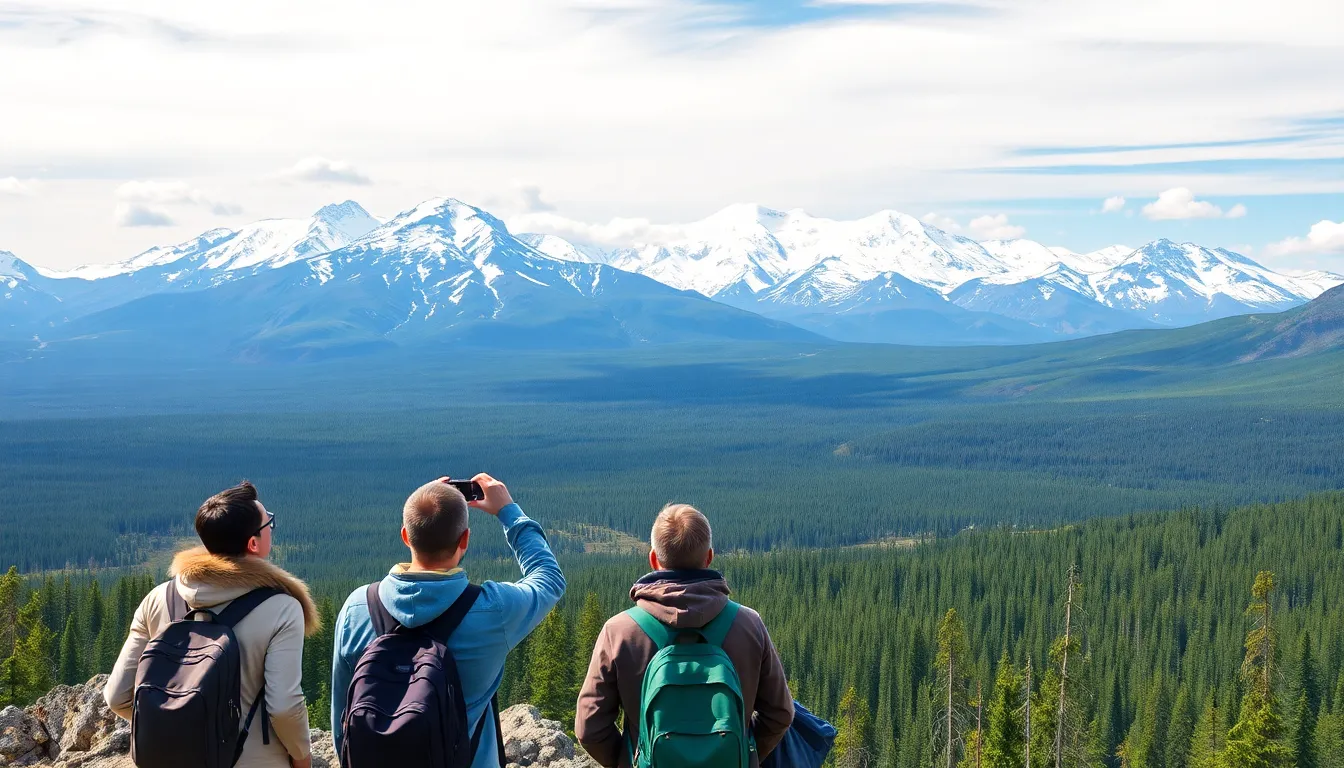Alaska might be known for its breathtaking landscapes and the Northern Lights, but there’s more than just beauty in the Last Frontier. The state’s economy is a wild ride, filled with trends that can make even the most seasoned economist raise an eyebrow. From oil spills to fishing thrills, Alaska’s economic story is as diverse as its wildlife.
Table of Contents
ToggleOverview of Alaska Economic Trends
Alaska’s economy exhibits unique characteristics influenced by its geography and resources. The oil and gas sector remains a significant contributor to the state’s economic health, making up about 85% of state revenues. As global oil prices fluctuate, Alaska’s fiscal stability can experience considerable changes.
The fishing industry plays an essential role, supporting thousands of jobs and producing high-value seafood products. Salmon, crab, and halibut are among the top catches that bolster local economies and drive exports.
Tourism has emerged as another vital sector, attracting millions of visitors annually. Attractions include national parks and historic sites that capitalize on Alaska’s natural beauty. Outdoor activities, such as hiking and wildlife viewing, enhance the economic impact of tourism.
Additionally, Alaska’s mining industry contributes significantly to the economy, with resources like gold, zinc, and copper being extracted. The state’s vast mineral wealth ensures ongoing investment and job creation in remote areas.
Infrastructure development has become a focus, as improved transportation networks foster economic growth. Cities and rural communities benefit from investments that boost local businesses, ultimately enhancing quality of life.
Demographic shifts also shape Alaska’s economic landscape. An increasing population, driven by both migration and natural growth, creates additional demand for goods and services. Cultural diversity enriches the workforce, fostering innovation across various sectors.
Technology adoption trends indicate a shift towards digital solutions, enabling businesses to reach wider markets. The emergence of remote work opportunities provides new avenues for employment, particularly in rural areas with limited job access.
Understanding these key economic trends provides a comprehensive view of Alaska’s dynamic economy, illustrating its resilience despite external challenges.
Key Industries Driving the Economy


Alaska’s economy thrives on several key industries that significantly influence its growth and stability. These sectors contribute diverse revenue streams, fostering economic resilience in a challenging environment.
Oil and Gas Sector
The oil and gas sector stands at the forefront of Alaska’s economic landscape. Approximately 85% of the state’s revenues stem from this industry. Major companies operate in the North Slope, extracting oil through advanced technologies. Global oil price fluctuations impact state fiscal health, making revenue diversification crucial. Increased investments in infrastructure support exploration efforts, creating jobs and stimulating local economies.
Tourism and Hospitality
Tourism and hospitality represent another vital component of Alaska’s economy. Millions of visitors arrive annually, drawn by the state’s breathtaking landscapes and rich wildlife. National parks such as Denali attract tourists seeking outdoor adventures and unique experiences. The industry supports thousands of jobs in hospitality, transportation, and retail sectors. Local businesses thrive through tourism, enhancing community vibrancy and cultural appreciation.
Recent Economic Data and Statistics
Current economic data reflects the diverse trends within Alaska’s economy. Employment data and GDP growth provide key insights into the state’s economic health.
Employment Trends
Alaska’s unemployment rate reached 4.1% as of September 2023, showing gradual recovery from pandemic-induced challenges. Job growth occurred primarily in sectors like healthcare, construction, and retail. Health services accounted for significant job additions, reflecting an aging population’s needs. Seasonal employment spikes in tourism create temporary demand, particularly in summer months. Additionally, remote work opportunities expanded, attracting diverse talent. These conditions encourage workforce development initiatives aimed at enhancing skills and supporting local businesses.
GDP Growth Insights
Alaska’s GDP grew by 2.5% in 2022, indicating a rebound driven by increased oil production and tourism recovery. Oil and gas extraction remains a primary contributor to GDP, accounting for about 25% of state output. The fishing industry contributes an estimated $1.5 billion to the economy, showcasing its importance. Tourism revenue approached $3 billion in 2022, signaling strong visitor interest. Consumer spending, bolstered by increased disposable income, plays a vital role in economic resilience. However, fluctuations in global oil prices pose continuous risks to sustained growth.
Challenges Facing Alaska’s Economy
Alaska’s economy faces several challenges that can affect growth and sustainability. Various factors contribute to these hurdles, including environmental concerns and infrastructure limitations.
Environmental Concerns
Environmental issues present significant challenges. Oil spills affect marine ecosystems, leading to long-term consequences for fishing industries. Climate change impacts wildlife migration and seasonal patterns, which disrupt traditional fishing and hunting practices. Increased natural disasters, such as wildfires and flooding, threaten local economies and infrastructure. Sustainable practices in resource extraction are crucial as they influence the health of ecosystems. Regulatory compliance demands additional costs on businesses, constraining their ability to innovate and expand. Addressing these environmental challenges requires cooperation among stakeholders to protect resources while ensuring economic viability.
Infrastructure Limitations
Infrastructure limitations hinder economic progress. Transportation networks, including roads and ports, often lack necessary upgrades to support growing industries. Disconnected communities face challenges in accessing essential services and markets. Limited broadband access affects remote work opportunities, impeding economic diversification. Investment in infrastructure is vital, as improved connectivity enhances business operations and community development. Addressing these limitations can attract new businesses and facilitate trade. Strengthening infrastructure fosters resilience against natural disasters, ensuring sustainability amidst changing economic landscapes.
Opportunities for Growth and Development
Alaska’s economy presents numerous opportunities fueled by its diverse resources and industries. Investment in renewable energy sources can enhance sustainability, catering to growing environmental concerns. The state’s rich natural resources, including mineral deposits and fisheries, provide foundations for expansion.
Healthcare remains a dynamic sector, responding to an aging population’s needs with increased job creation. Innovations in telemedicine offer avenues for growth, improving access to health services across remote communities.
Tourism’s recovery post-pandemic highlights potential for further development. Attracting diverse visitors through unique experiences, such as wildlife viewing and cultural events, strengthens the hospitality and retail industries. Seasonal tourism spikes indicate a need for expanded infrastructure, improving transportation and accessibility to key sites.
The fishing industry continues to generate significant economic contributions, with an estimated $1.5 billion in 2022. Encouraging sustainable fishing practices could boost this sector further while safeguarding marine ecosystems.
Real estate opportunities arise from demographic shifts, necessitating housing developments that accommodate the increased population demand. Additionally, remote work trends create competitive advantages for businesses offering lifestyle flexibility, attracting talent seeking work-life balance.
Technology adoption is integral in shaping Alaska’s future. Enhanced broadband access can facilitate economic growth by expanding business capabilities and connecting remote workers. Skill development programs in emerging technologies equip the workforce for a diversifying economy.
Collaboration among businesses, local governments, and educational institutions is essential. Such partnerships can drive innovation, foster resilience, and create a thriving economic environment. Addressing infrastructure and environmental challenges, Alaska stands poised to leverage its unique assets for sustainable growth and development.



